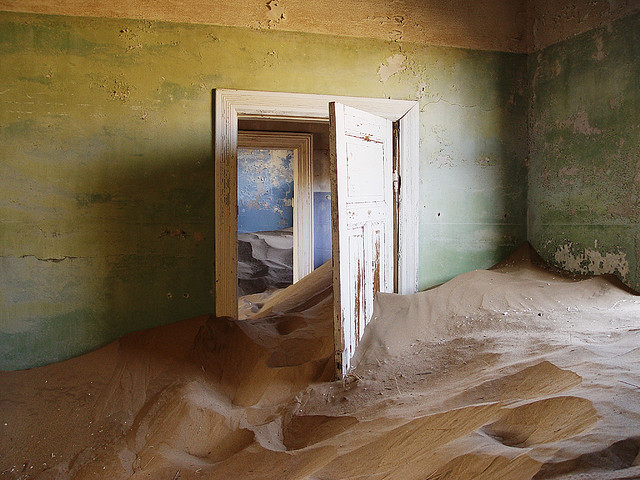Ghost towns have a peculiar fascination. They hold the story of a once glorious past and show us how the future took a very different and unexpected turn. Many ghost towns were abandoned by their residents as the economic fortunes of the local area took a turn for the worst — some from exhausted natural resources such as over-exploited mines, others from re-routed transportation, natural disaster or changes in demographics. One such town to have suffered from the inevitable boom and bust cycle of mining — in this case diamonds — is Kolmanskop in Namibia. The town is now being swallowed whole by the ever-shifting sands of the nearby Namib desert, which makes the eerie landscape a photographer’s paradise.
From Atlas Obscura:
People flocked to what became known as Kolmanskop, Namibia, after the discovery of diamonds in the area in 1908. As people arrived with high hopes, houses and other key buildings were built. The new town, which was German-influenced, saw the construction of ballrooms, casinos, theaters, ice factories, and hospitals, as well as the first X-ray station in the southern hemisphere.
Prior to World War I, over 2000 pounds of diamonds were sifted from the sands of the Namib desert. During the war, however, the price of diamonds dropped considerably. On top of this, larger diamonds were later found south of Kolmanskop, in Oranjemund. People picked up and chased after the precious stones. By 1956, the town was completely abandoned.
Today, the eerie ghost town is a popular tourist destination. Guided tours take visitors around the town and through the houses which, today, are filled only with sand.
Read the entire article here.
Image: Kolmanskop. Courtesy of Damien du Toit (coda). See more images from the flickr-stream here.

